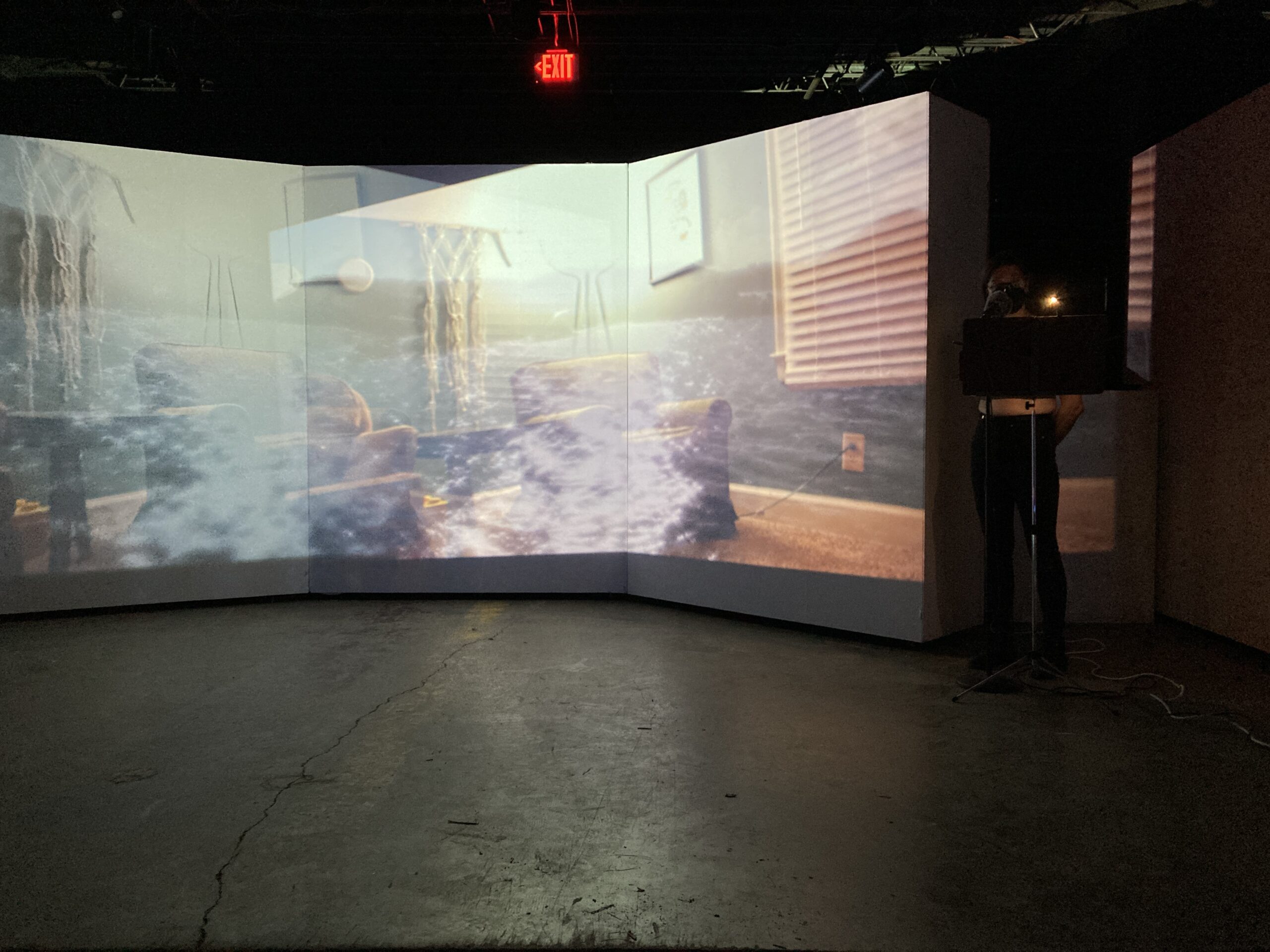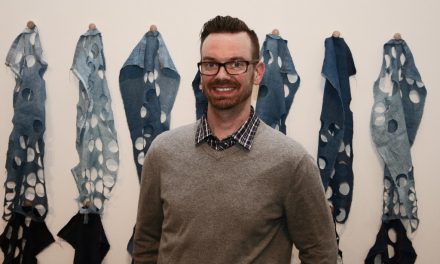Joyce Barbour’s guided meditation
The Sanctuary Project
Joyce Barbour, Amy Davis, Magnolia Hensley, Sara Noori, & Taylor Sanders
Curated by Keith Waits
Entire contents are copyright © 2023 by Martin French. All rights reserved.
Editor’s note: this exhibit was curated by me, so I did not solicit a review, but this was offered to Arts-Louisville after Mr. French attended the event, and, in the interests of the artists involved, I decided to publish it.
In recent years – in recent days – the world seems to have been in a state of tumult. Wars, climate crises, political insurrection – these have been the meals our evening news would be serving us, were we watching our evening news as a unit in the evening any longer, rather than doom scrolling from morn to bed. These have built our daily tensions, numbing us to life, as people struggle for their stories to be shared and their existence to be validated, never mind the constant attacks that come on so many people for just existing. And the doom scrolling. This month has already been filled with trauma enough for any given year, even before factoring in the storms. All of us, regardless of where we are at, need something to help us back up at this moment in time.
And it was there to be experienced this past weekend at Louisville Visual Art (LVA) where, both literally and titularly, Sanctuary was provided. The Sanctuary Project, curated by Keith Waits. Billed as an “interdisciplinary exploration of performance”, its run was a brief but well-attended two nights that defied the storms on a Friday and welcomed so many on Saturday. Featuring five different local artists, it was a chance to be drawn in by positives and perspectives.
We were greeted initially by Magnolia Hensley’s piece, where positive phrases and questions were projected onto the audience/participants which could then be read in the mirrors. I enjoyed the texture of the concept – the mirror playing such a part in much of our negative self-talk now being invited to speak to the fears we are so often attempting to suppress. It was a perfect way to start the evening, disarming us from the start with a very accessible message of positivity. Before departing, we were offered a card to share with people, a message of goodwill to share. It was no surprise to see people returning again and again.
Depending on how long you took with the first piece, your second experience could have been with Taylor Sanders’s simple-seeming installation – an easel with a wreath. At first glance, it appeared a simple tribute, and then suddenly, a group of people gathers, and call people to join in for a selfie, and you are brought into a picture, becoming a part of the subject or the picture taker, before the piece was over. Taken at this, it seems slight, but with the added context of it being a group of young people, all of whom are Black, and this installation was taking place in West Louisville, it suddenly makes a lot of sense. As someone who has attended a lot of funerals over years, it struck hard. The dynamics of the traditional funeral services for elderly or at least middle-aged folks contrast greatly with selfies and the near routine it has become for many of our local youth. Though short, it had the most impactful message of all.
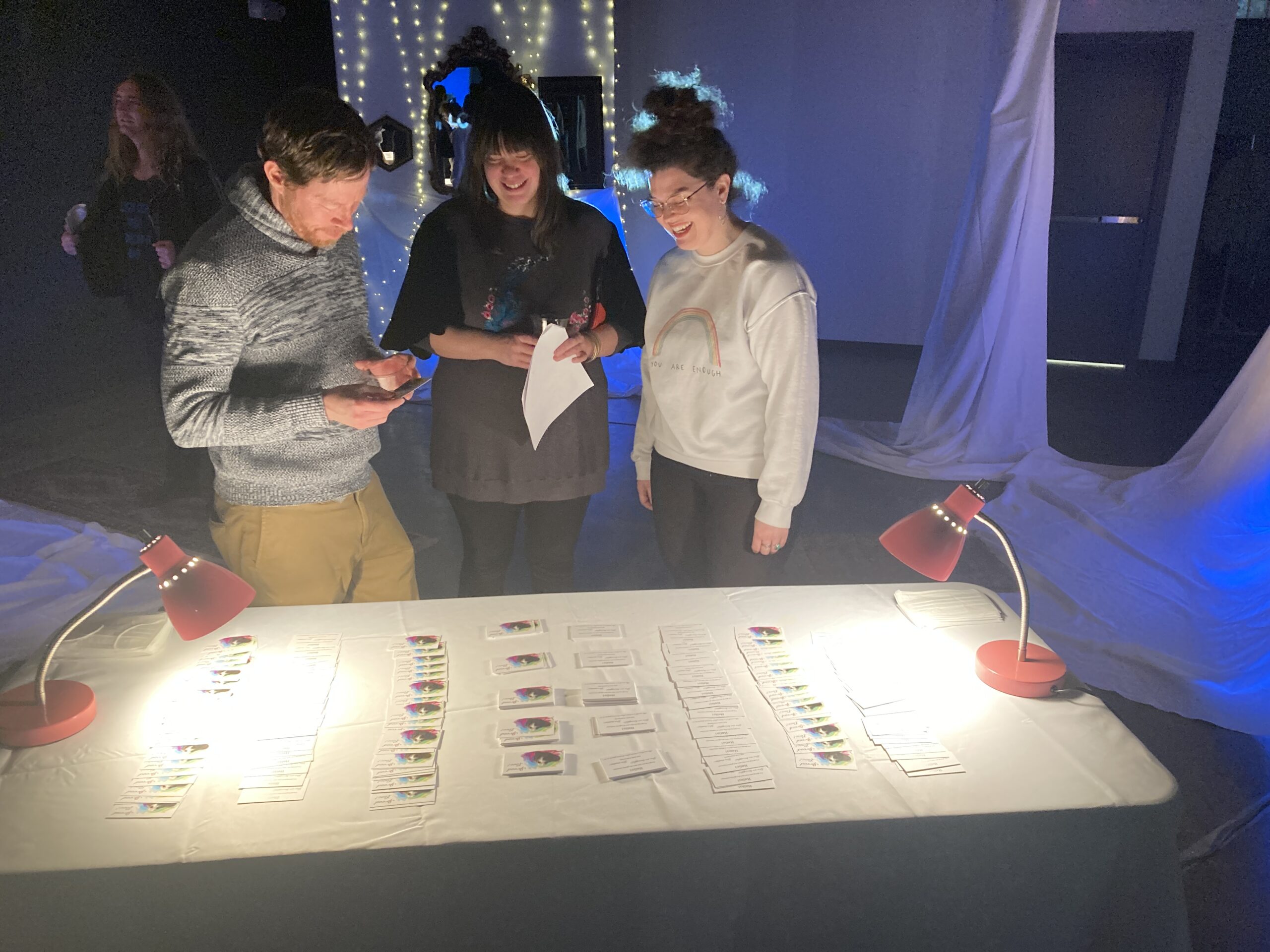
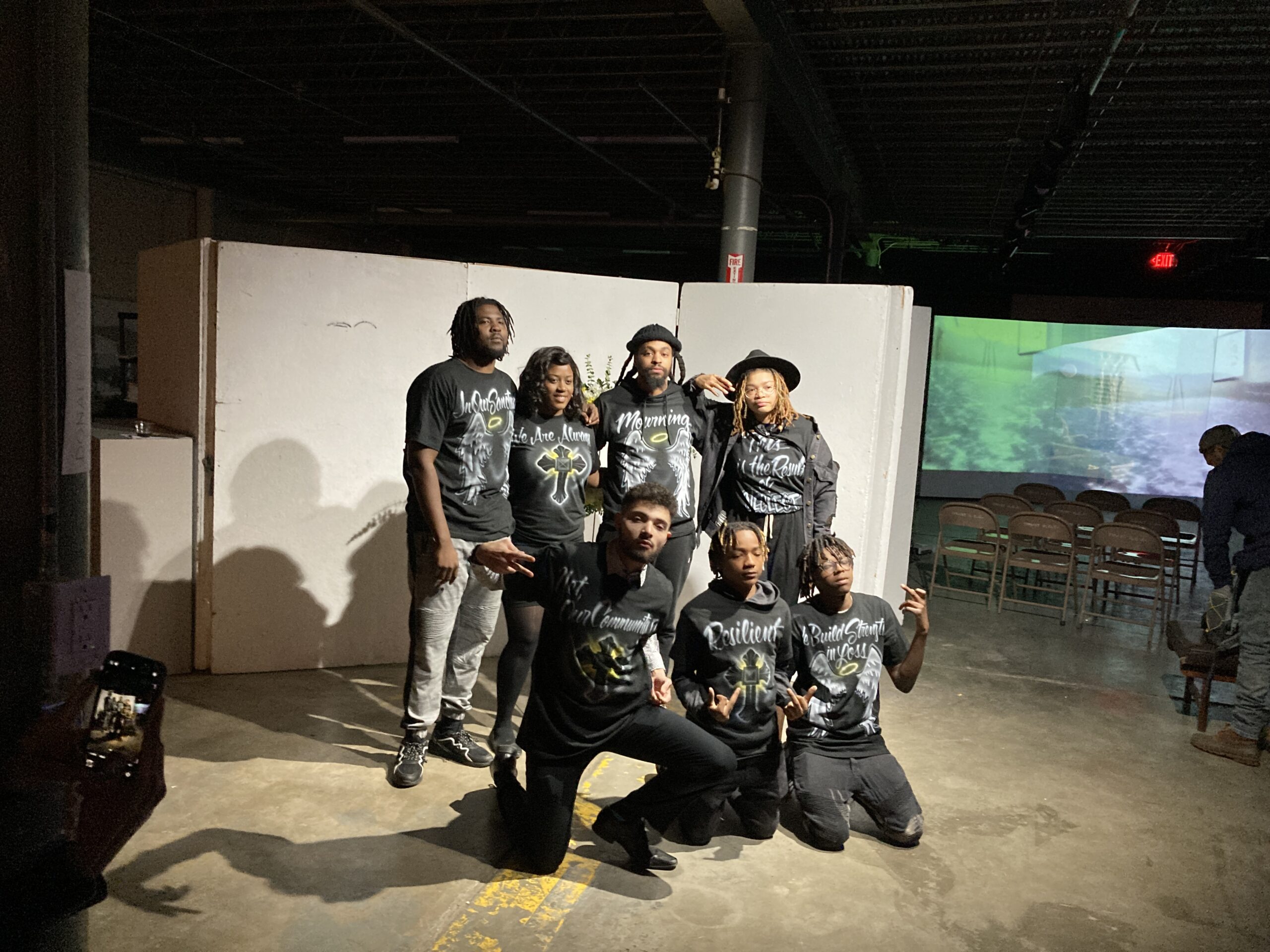
Joyce Barbour’s led meditation was a very welcome addition after the previous one, and the combination of images and soft words was very soothing – as she suggests in her statement, it is “a haven free from harmful stimulus that invites you to rest”. Her calming presence and performance made for a very welcoming guide. It felt like a very well-measured stop for mental and emotional refreshment, and I noted several making return trips.
Given my history as a regular at performance art shows, the work Sara Noori created spoke most to my own aesthetics for viewing – a hard disciplined abstract movement to purpose. The physical sanctuary they created for the performance connected with a number of pieces I’ve seen over the years but was at once its own piece, a unique landscape for their performance. Unlike the other physical pieces like this I have seen, the addition of the human to the landscape did very much evolve its dynamic, as though by entering this refuge, it takes on a new life, as does the human who enters. Great discipline is necessary to pull this off and maintain the attention of an audience being tempted with many other treats.
Amy Davis’ deconstructed blanket fort was a geometric fascination from the outside, but the pain and joy woven into the piece were a heartbreaking joy, the little messages spoke of pain in their stylization, and their reminders of something better to be sought. The creation of quilts is an age-old, famously American craft that has been recognized as an art form in recent years and as a storytelling technique. Davis uses their quilts to tell the stories of their experience too, directly through words and indirectly by design. The varying levels of the blankets both offered comfort and slight anxiety to me – the pieces I perceived as a roof were high enough that I didn’t need to worry about bending down to fit in, but there is that part of me that wishes that I could have had an opportunity to examine them too.

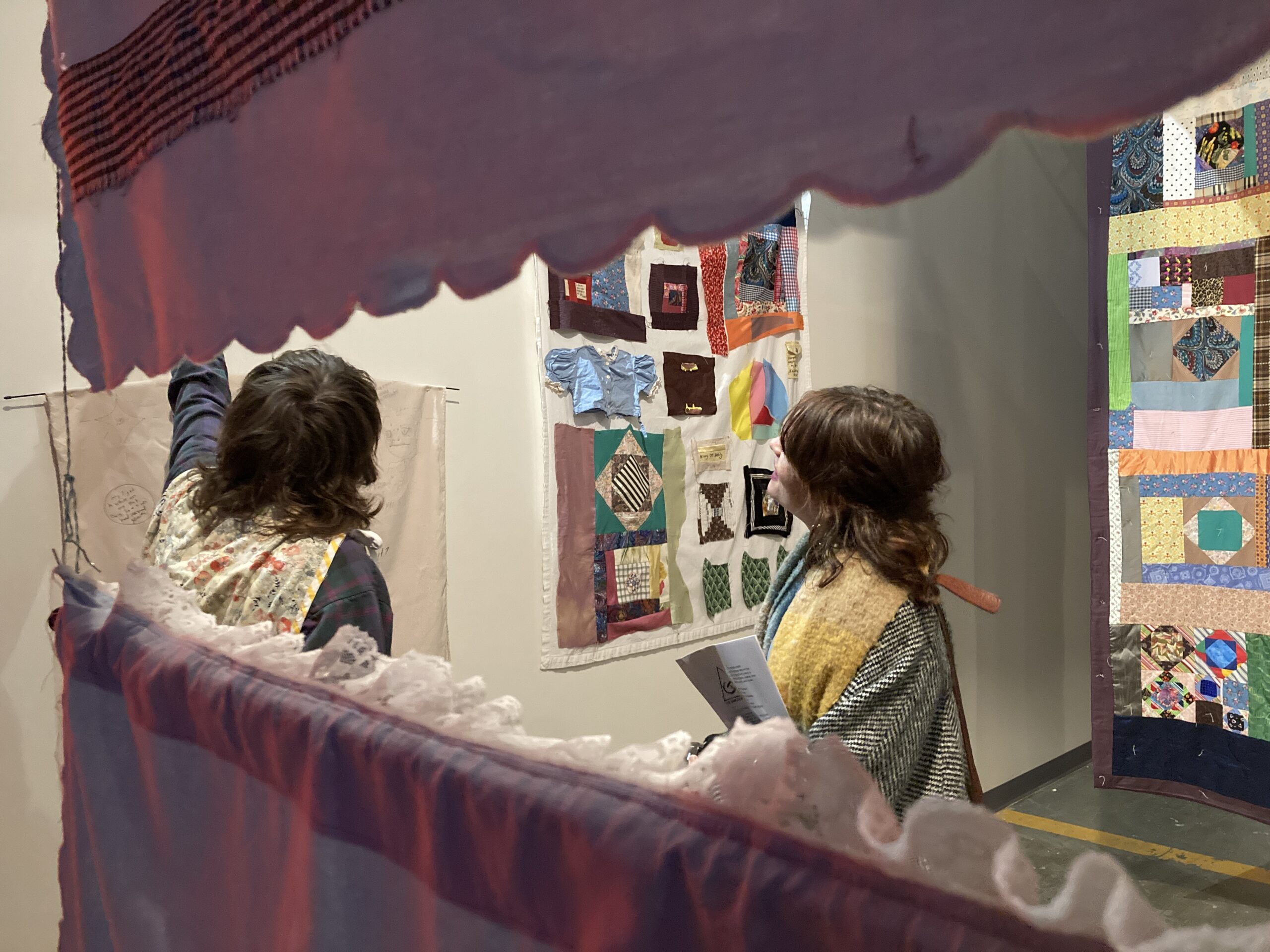
Individually, I think each work had a different impact. I particularly liked seeing where the “performance” was centered in each case, with the internal (and reflective, the communal, and the more traditional performer and audience dynamic. Indeed, taking the guide of it being a performance art installation, I found it fascinating that the most abstract piece (Noori’s) had the most traditional form of performance. In another way, Davis’ blanket fort was seemingly the least performative of the pieces and the most traditional craft on view. And yet, they were the pieces that perhaps took the greatest risks in what they did.
As a whole, great credit must go the LVA and Waits for his work as curator, in bringing these artists together. Despite the wide variety in durations, engagement, and approach, nothing felt out of place. If anything there was sympathy between them, each work supporting and informing the others.
Taken as a collective whole they create a uniquely personal experience for the visitor, regardless of whether they are performance art connoisseurs or are new to the form. Together they build a journey that welcomed, challenged, and soothed the audience. I met people there who were deeply moved by what they had experienced and were grateful for it through their tears. Daily and unknowingly, we endure daily pressure and awareness of what is going on around us. We must keep ourselves aware of the changes and tensions in our world, but this show proved a reminder that we must also be aware of our personal needs too.
The Sanctuary Project
March 3 & 4, 2023
Louisville Visual Art
1538 Lytle Street
Louisville, KY 40203
Martin French has worked in a variety of theatrical roles over many years in a number of countries. In Louisville, he has worked with a wide range of local companies. Never with Actors Theatre, though.He is a Founder and Co-Artistic Director of The Chamber Theatre.

